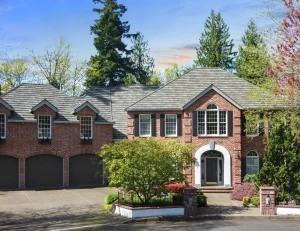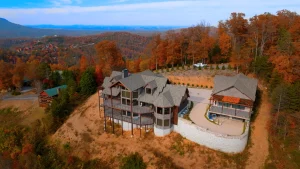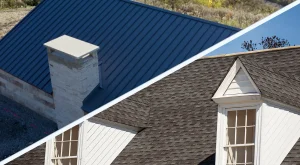The Great Roofing Debate: Breaking Down the Pros and Cons
As a builder or developer, you’ve likely faced this dilemma countless times – metal or tile for your next project? It’s not just an aesthetic choice; it’s a decision that impacts everything from structural requirements to long-term maintenance costs. Let’s cut through the noise and examine what really matters when choosing between these two roofing giants.
Weight Matters: Structural Implications You Can’t Ignore
Here’s something that doesn’t get enough attention in roofing discussions – the dramatic weight difference between these materials. Traditional clay or concrete tiles can weigh anywhere from 900-1,500 pounds per square, while metal roofing typically comes in at a featherlight 50-150 pounds per square.
Why should you care? Because that weight difference translates to:
-
Reduced structural support requirements (saving on framing costs)
-
Easier retrofitting opportunities for existing buildings
-
Greater design flexibility for architectural features
We recently worked with a developer renovating a historic commercial property where the existing structure simply couldn’t support tile roofing. Our metal roofing solution gave them the upscale look they wanted without expensive structural reinforcements.
Installation Speed: Where Time Literally Equals Money
Let’s talk about one of the most overlooked cost factors – labor. Metal roofing installs significantly faster than tile, often completing projects in half the time. For commercial projects where time is money, this advantage alone can make metal roofing the clear choice.
Consider these real-world comparisons:
-
A 20,000 sq ft office building: Metal roof completed in 12 days vs 25+ days for tile
-
A 50-unit apartment complex: Metal installation finished 3 weeks ahead of tile schedule
-
A retail strip center: Metal roofing allowed earlier tenant occupancy = faster ROI
At RoofGlory.com, we’ve helped numerous contractors shave weeks off their project timelines simply by switching to metal roofing systems.
Weather Resistance: Beyond the Sales Brochures
Both materials claim weather resistance, but how do they actually perform when Mother Nature unleashes her fury? Here’s what our clients consistently report:
Metal roofing:
-
Handles hurricane-force winds (up to 140 mph in some systems)
-
Sheds snow accumulation more effectively
-
Resists hail damage better than most tile products
-
Won’t absorb water during prolonged rains
Tile roofing:
-
Performs well in standard conditions
-
Can become brittle in freeze-thaw cycles
-
More prone to wind uplift (especially older installations)
-
Absorbs moisture that can lead to mold issues
A hotel chain we work with switched to metal roofing after replacing hundreds of broken tiles after every major storm. Their maintenance costs dropped by 60% in the first year alone.
The Maintenance Reality: What Happens After Installation
Here’s where metal roofing really separates itself from tile in commercial applications. While tile roofs require regular inspections for cracked or broken tiles (especially after severe weather), metal roofing systems typically need minimal ongoing maintenance.
Key maintenance differences:
-
Tile roofs: Annual inspections recommended, individual tile replacements common, mortar repairs needed over time
-
Metal roofs: 5-7 year inspection cycles, typically only fastener checks required, no individual component replacements
For property managers overseeing multiple buildings, this maintenance difference can mean thousands in annual savings across their portfolio.
Fire Resistance and Safety Considerations
In wildfire-prone areas or for buildings with strict fire codes, metal roofing offers non-combustible protection that tile simply can’t match. While clay tiles are fire-resistant, the underlayment and framing beneath them often aren’t. Metal roofing systems provide complete fire protection from top to bottom.
Important safety notes:
-
Metal roofing won’t fuel fires or produce burning embers
-
Many insurance companies offer discounts for metal roofed buildings
-
Some municipalities now require fire-resistant roofing in new commercial construction
The Aesthetic Factor: Design Flexibility Compared
Modern metal roofing has come a long way from the corrugated barn roofs of the past. Today’s systems can replicate the look of:
-
Traditional standing seam metal
-
Slate tile profiles
-
Clay barrel tiles
-
Wood shake appearances
The advantage? You get the desired architectural look without the weight or fragility of the original materials. We recently completed a high-end resort where the metal roofing perfectly matched the Mediterranean tile aesthetic the architect specified – at half the weight and with better storm resistance.
Long-Term Value: Which Roof Actually Saves You Money?
While tile roofing has its place in certain applications, metal roofing consistently delivers better long-term value for commercial projects. Consider:
-
Lifespan: Quality metal roofs last 40-70 years vs 20-50 for tile
-
Energy efficiency: Metal reflects solar heat better than tile
-
Resale value: Commercial properties with metal roofs often command premium prices
-
Warranties: Metal roofing typically comes with longer warranty periods
A regional hospital system we work with calculated that switching to metal roofing would save them $3.2 million in replacement costs over 30 years across their facilities.
Making the Right Choice for Your Specific Project
There’s no one-size-fits-all answer in the metal vs tile debate. The right choice depends on:
-
Your project’s architectural requirements
-
Local climate conditions
-
Budget constraints (both initial and long-term)
-
Structural limitations
-
Maintenance capabilities
At RoofGlory.com, we help builders and developers navigate these decisions every day. Our team can provide:
-
Side-by-side cost comparisons for your specific project
-
Sample materials to evaluate quality firsthand
-
Case studies from similar completed projects
-
Technical specifications for your architects
Why Not Get Expert Advice Tailored to Your Needs?
Instead of guessing which roofing solution is best for your next project, why not talk to professionals who work with both materials daily? Visit RoofGlory.com to schedule a consultation with our roofing specialists. We’ll help you weigh all the factors – from installation logistics to lifecycle costs – so you can make the most informed decision for your specific situation.
Remember, the roofing choice you make today will impact that building for decades to come. Shouldn’t you work with a supplier who understands both sides of the metal vs tile equation?








